Safety signs in the workplace have various roles. The most important one is quick safety communication. Hazard identification signs instantly warn workers of a potential life threat. This might be the possibility of high voltage electricity or falling masonry, etc. The signs also provide visual alerts for safety procedures. For instance, the Personal Protective Equipment (PPE) signs in COVID-19 isolation wards. Thus, these signs are essential for employee safety and risk mitigation. This also makes safety signs a crucial part of OHS compliance. So, lack of proper signage can mean legal trouble for the business. Meanwhile, workers and visitors must be aware of the safety symbol meanings for their own sake.
Why Are Safety Signs Important in the Workplace?
Safety signs in the workplace are important for two main reasons. The first one is workplace accident prevention. There have been 1,850 serious workplace injuries in Australia over the last decade. These signs save your visitors and employees from such traumas and life threats. The second one is compliance with safety standards.
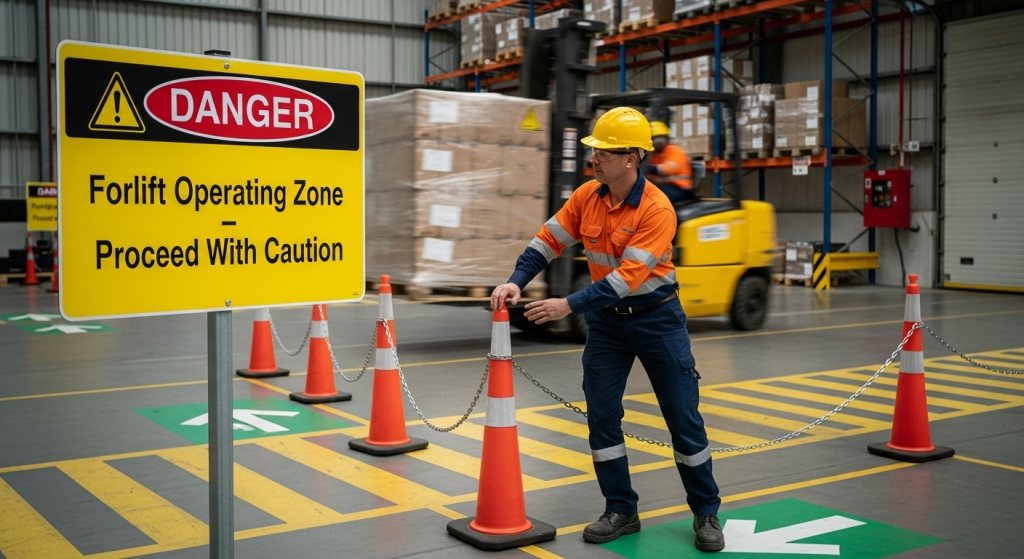
Occupational Health and Safety (OHS) Compliance
Proper signage is a crucial part of the workplace safety regulations. The AS 1319-1994 defines the Australian Standards for Risk Management signs. It describes the safety signage requirements in detail. These include safety colour coding, design and placement of the signs. The aim is to make the signs easily recognisable and consistent. It also divides the signage into different categories.
Failure to comply with safety standards might constitute a category 1-3 offence under the WHS Act. The penalty ranges from a few hundred thousand to millions of dollars, depending on the degree of damage the employee or visitor suffers due to your negligence. So, ensure the following signage.
Prohibition Signs
These are a type of regulatory sign. It warns the viewer about a non-permissible action. You can easily recognise these signs from the red circle with a diagonal slash. There will be a black pictograph against white black ground within the circle. The pictograph indicates the not-permitted action. For instance, a cigarette means no smoking. A camera within the circle indicates you cannot take pictures in that place. Picture of a dog tells you no pets are allowed in the area.
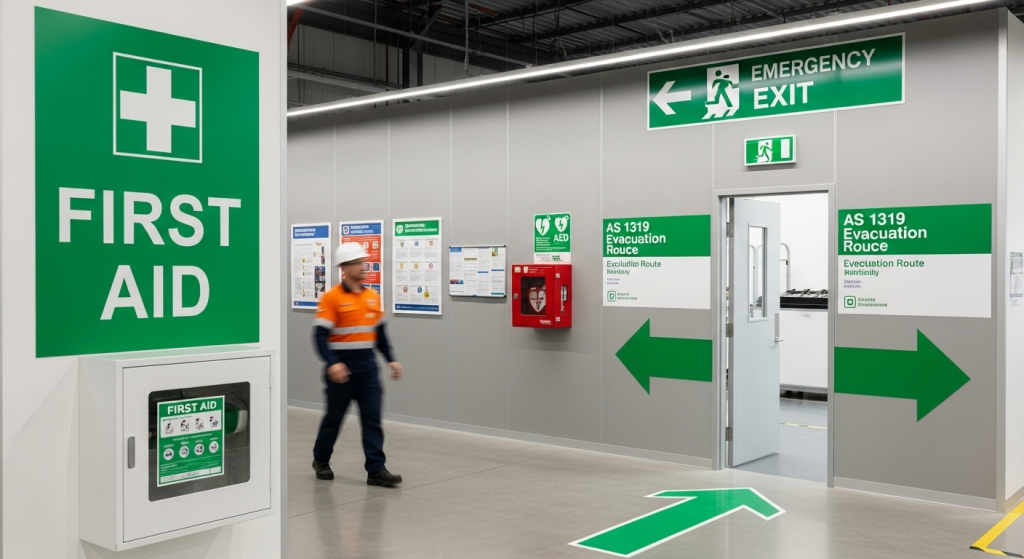
Mandatory Signs
These regulatory signs indicate an action that you must do. The viewer is in imminent danger if they don’t do it. The symbol is a solid blue circle with a white pictograph. For instance, it may be the picture of a man wearing a hard hat. This means hard hats are mandatory in that area to protect your head. Similarly, there are signs for safety goggles, ear protection, gloves, etc.
Restriction signs
These signs put a numerical restriction on your activities in that area. The symbol is a red circle. Within it, there will be a black number against a white background. For example, a warehouse worker might see a sign in their loading area that says 10 mph. This indicates the speed limit for forklifts in that area.
Danger signs
This is a type of hazard sign. The symbol is a rectangle. The upper third of the rectangle is solid black with a red oval on it that says ‘DANGER’ in white. Below it, there will be a message with or without a picture. For example, Danger-High Voltage, Danger-Keep Out (hazardous storage area) etc. Danger Signs indicate hazards that are likely to kill you.
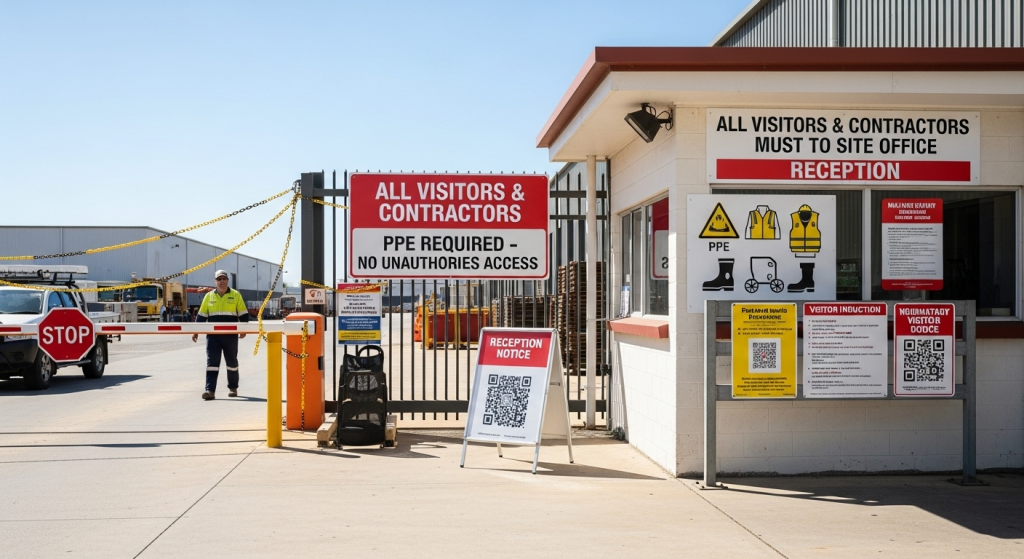
Warning Signs
These are also hazard signs but don’t indicate a danger that can kill you. For instance, a ‘Slippery When Wet’ sign. Although you might not die there is still the risk of injury. These signs are recognisable from the solid yellow triangle bound by black borders.
Emergency Information and Fire Signs
Emergency signs provide quick instructions. The emergency exit signs are a well-known example of this. There is a running figure and arrow in these signs. This immediately tells the viewer which way to rush toward the exits during a disaster. The signs have white text or symbols against a green background.
Fire signs help people follow emergency procedures effectively. The signs immediately tell someone about the location of fire equipment. For instance, a red background with a white fire extinguisher symbol.
Safety Sign Visibility
Hazard identification signs don’t mean much if people can see them clearly. So, the duty holder must ensure proper signage placement. The position of the signage must be such that it is easily viewable. There shouldn’t be any obstruction and the signage must be at proper height.
Symbol and text size must be at least 15 mm/m and 5 mm/m and of viewing distance respectively. Keep the signs clean and well-clean for maximum effectiveness.
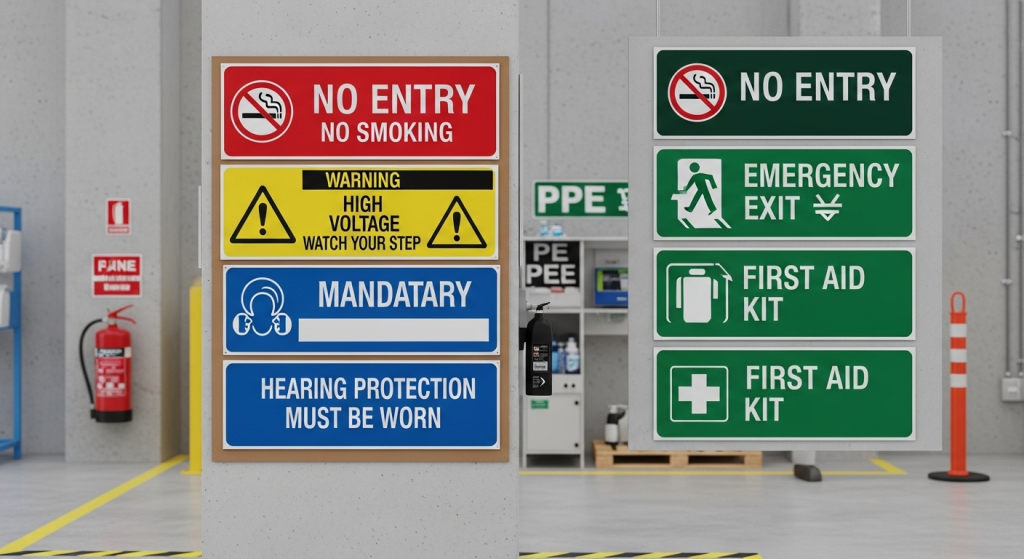
Visual Safety Cues
Warning signs in the workplace transcend language barriers. The picture of a skull or flame within hazard signs screams out ‘Fatal Danger’ in every language of the world. Also, these signs swiftly communicate safety instructions in a fast-paced, noisy environment.
Encourages Workplace Safety
Safety signages serve as a constant reminder for workers and visitors. Thus, decreasing the chance of accidents in the workplace. For instance, a personal protective equipment (PPE) signage reminds nurses and attendants to wear PPE every time they visit a patient in isolation. This can effectively cut down rates of transmission.
Similarly, mandatory safety signs with goggles and hard hats constantly encourage construction site workers to keep their gear on.
Emergency Guidance
People panic during disasters. As a result, they become a disorderly crowd. This further adds to the number of damages during the incident. Safety signages can provide quick and clear instructions during times of panic. This helps people keep their cool and follow safety protocols properly.
Suppose your facility is on fire. Strategically placed emergency exit signs will help the crowd evacuate the building in a fast and orderly fashion. Meanwhile, fire equipment signs will assist in quickly managing the fire.
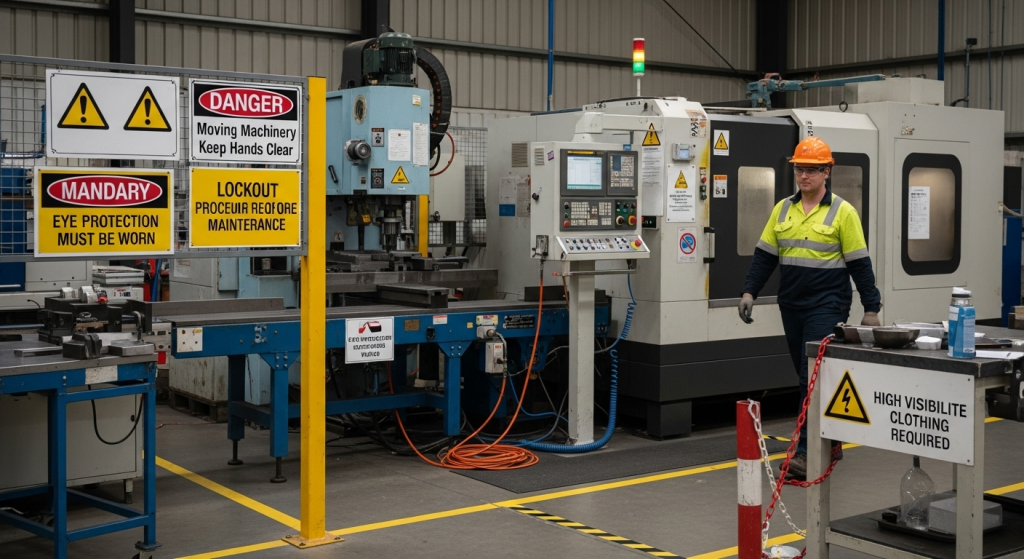
Final Words
Safety signages are crucial for workplace hazard management. Any caring business owner or responsible duty holder would ensure the proper placement of these signs. However, the details and definitions of these signages are quite extensive. It can easily overwhelm the average person. As a result, you might put up signs that are not consistent in colour and symbol with the Australian Standards. This can lead to confusion and a lack of OHS compliance. Signage 4Business Group can help you here. We have been working with signages for Australian businesses for over two decades. Our experts are well-versed in the national signage requirements. So, contact us today to create a safer workplace for your employees and clients.